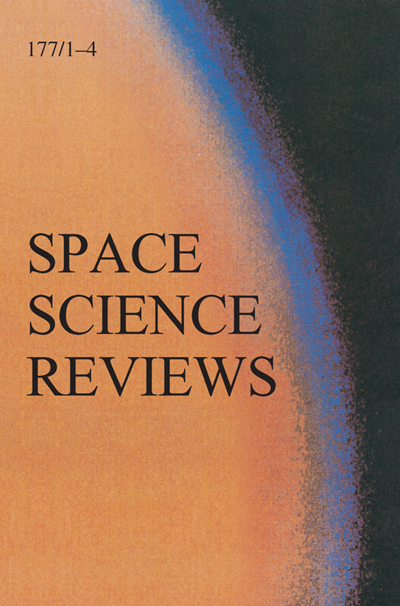月球引力波探测
IF 7.4
2区 物理与天体物理
Q1 ASTRONOMY & ASTROPHYSICS
引用次数: 0
摘要
月球探测的新时代也开始为科学带来巨大的机遇。有人提议在月球表面部署新一代天文台,以深入研究我们的宇宙。这包括无线电天线,它将被保护在月球的远端免受地面无线电干扰,以及引力波探测器,它将从月球上极低水平的地震干扰中获益。近年来,人们提出了基于长基线激光干涉测量或紧凑传感器测量GW引起的月球表面振动的月球GW探测器的新概念。在这篇文章中,我们回顾了在月球上使用这种仪器的概念和科学机会。月球GW探测器除了有望在天体物理学和宇宙学方面取得突破性发现外,还将成为研究月球内部结构的强大探测器,并提高我们对月球地球物理环境的了解。本文章由计算机程序翻译,如有差异,请以英文原文为准。
Lunar Gravitational-Wave Detection
Abstract A new era of lunar exploration has begun bringing immense opportunities for science as well. It has been proposed to deploy a new generation of observatories on the lunar surface for deep studies of our Universe. This includes radio antennas, which would be protected on the far side of the Moon from terrestrial radio interference, and gravitational-wave (GW) detectors, which would profit from the extremely low level of seismic disturbances on the Moon. In recent years, novel concepts have been proposed for lunar GW detectors based on long-baseline laser interferometry or on compact sensors measuring the lunar surface vibrations caused by GWs. In this article, we review the concepts and science opportunities for such instruments on the Moon. In addition to promising breakthrough discoveries in astrophysics and cosmology, lunar GW detectors would also be formidable probes of the lunar internal structure and improve our understanding of the lunar geophysical environment.
求助全文
通过发布文献求助,成功后即可免费获取论文全文。
去求助
来源期刊

Space Science Reviews
地学天文-天文与天体物理
CiteScore
19.70
自引率
3.90%
发文量
60
审稿时长
4-8 weeks
期刊介绍:
Space Science Reviews (SSRv) stands as an international journal dedicated to scientific space research, offering a contemporary synthesis across various branches of space exploration. Emphasizing scientific outcomes and instruments, SSRv spans astrophysics, physics of planetary systems, solar physics, and the physics of magnetospheres & interplanetary matter.
Beyond Topical Collections and invited Review Articles, Space Science Reviews welcomes unsolicited Review Articles and Special Communications. The latter encompass papers related to a prior topical volume/collection, report-type papers, or timely contributions addressing a robust combination of space science and technology. These papers succinctly summarize both the science and technology aspects of instruments or missions in a single publication.
 求助内容:
求助内容: 应助结果提醒方式:
应助结果提醒方式:


